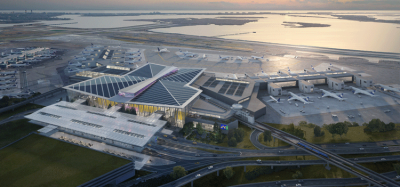Canso urges EU to ease cost targets so air traffic providers can invest in capacity
Posted: 20 October 2025 | Gabriel Higgins | No comments yet
European air navigation providers improved performance despite cost pressures, prompting Canso to call for more flexible EU efficiency targets to support future capacity growth.


Credit: CANSO
European Air Navigation Service Providers (ANSPs) have been under pressure to reduce costs to meet EU efficiency targets, limiting their ability to invest in future capacity. Despite these constraints, they have improved performance and reduced delays, demonstrating that investment in air traffic management (ATM) delivers clear benefits. CANSO is urging the EU to adopt more realistic cost-efficiency targets so ANSPs can continue investing in capacity for growing traffic demand.
The EU Performance Review Board (PRB) Annual Monitoring Report, published on 14 October, details how ANSPs in 29 European countries managed increasing air traffic levels in 2024, with over 9.5 million flights, a 5.2 per cent rise from 2023. ANSPs maintained their record of delivering savings to airspace users, as average European-wide en route actual unit costs fell to €46.62, down seven per cent on 2023 and below the EU target of €49.48.
While ANSPs achieved operational efficiencies, such as a seven per cent increase in the number of maximum sectors open and a two per cent rise in sector opening hours, delays were still influenced by factors including adverse weather, geopolitical instability, and the introduction of new ATM systems and staffing. Although the total number of operative air traffic control officers (ATCOs) increased, recruiting and training sufficient personnel remains a major challenge. CANSO argues that cost-efficiency targets should better reflect the need for long-term capacity investment.
Join us live: Shaping the Next Generation of Hold Baggage and Air Cargo Screening
Join us live for an insightful webinar on 11th December at 14:00 GMT, in collaboration with Smiths Detection, as we explore the strategic balance of operational efficiency, regulatory compliance, and sustainability in high-volume security environments.
This session offers a focused look into future-proofing your security strategy.
Key learning points
- Cost Reduction: Strategies to minimize bag travel time while simultaneously reducing operational costs.
- Regulatory Roadmap: Insights into the next wave of regulatory changes and their impact on future investment decisions.
- Sustainable Systems: Practical approaches to building sustainability into security systems and lowering the total cost of ownership (TCO).
- Scalable Solutions: Real-world examples of scalable systems supporting current airport growth and preparing for tomorrow.
Register now for expert insights, case studies, and actionable strategies on operational efficiency!
Encouragingly, improvements in summer 2025 have already led to reduced delays. EUROCONTROL data for 1 June to 15 September 2025 show that traffic across 42 European countries rose by three per cent compared with the same period in 2024, while average en-route delays per flight fell by thirty-one per cent. This reduction reflects the benefits of investment in airspace design, technology, and controller availability.
Enrico Parini, CANSO Director Europe Affairs, said: “The PRB’s Annual Monitoring Report gives a picture of the complexities and challenges of air traffic management in European airspace last year. Our members delivered more capacity to meet growing traffic demand while also pushing down costs. European ANSPs are committed to continuing the recent reduction in delays over the long term. We call for EU regulation to allow them greater flexibility to invest in the future to meet airlines’ needs.”
Stay Ahead in Aviation — Subscribe for Free!
Get exclusive access to the latest aviation insights from International Airport Review — all tailored to your interests.
✅ Expert-Led Webinars – Learn from industry leaders
✅ Weekly News & Reports – Airport updates, thought leadership, and exclusive interviews
✅ Event Invitations – Be part of the International Airport Summit
✅ Partner Innovations – Discover the latest industry trends
Choose the updates that matter most to you. Sign up now and stay informed, inspired, and connected — all for free!
Thank you for being part of our community. Let’s keep exploring the future of aviation together!
WATCH NOW ON DEMAND: Enabling checkpoint flexibility with responsible open architecture
Join us for an essential virtual panel supported by Smiths Detection. We will explore how airports can overcome the challenge of mixed vendor systems by adopting a flexible, open approach to checkpoint technology.
This session offers a focused look into achieving efficiency, agility, and future-readiness.
Key learning points
- Understand what to ask during procurement to ensure long-term flexibility and avoid vendor lock-in.
- Learn how centralised image review and flexible algorithm use can help you get more from the technology you already own.
- Strategies to make mixed vendor screening systems work together to improve checkpoint performance and reduce costs.
- See examples of collaborative deployments and the operational agility they enabled.
Register now for expert insights from Los Angeles World Airports, Dutch Ministry of Justice and Security, and Smiths Detection!
Related topics
Air traffic control/management (ATC/ATM), Airlines, Airspace modernisation, Capacity, Funding and finance, Innovation, Operational efficiency, Recruitment and training, Regulation and Legislation, Sustainability


















